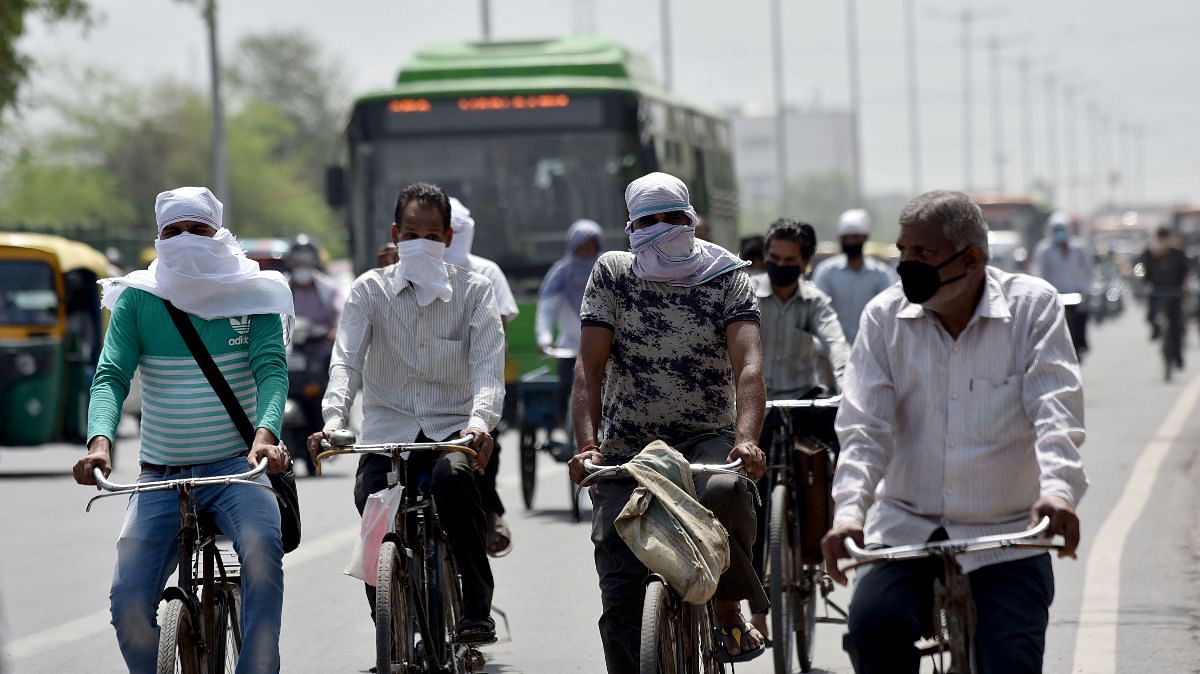New Delhi: Delhi will alter school timings, suspend non-essential water use, provide uninterrupted power supply to health facilities and survey vulnerable locations daily to mitigate the impact of extreme heat on susceptible populations in peak summers, according to the city’s new heat action plan.
The Delhi Disaster Management Authority (DDMA), which prepared the plan and submitted it to the Centre last month, also plans a pilot project to paint roofs in identified areas with white colour to help keep the indoors cooler.
The nodal officer, who will be responsible for the implementation of the heat action plan (HAP), is still to be appointed, a DDMA official told PTI.
Delhi is one of the hottest cities in India and ranks among the most susceptible to heat waves due to its large population and a significant concentration of lower-income groups.
India reported 706 heatwave incidents from 1971-2019 which claimed more than 17,000 lives, according to a paper authored by M Rajeevan, former secretary of the Ministry of Earth Sciences, along with scientists Kamaljit Ray, S S Ray, R K Giri and A P Dimri.
A study by the Indian Institute of Technology-Gandhinagar says India could witness a staggering 30-fold increase in severe heat waves by 2100. A 75-fold rise is predicted under a business-as-usual scenario.
The Delhi HAP relies on heat wave forecasts from the India Meteorological Department for the next seven days for issuing colour-coded alerts to the local population.
A ‘red alert’ will be triggered when the maximum temperature exceeds the normal temperature by at least 6 degrees Celsius. An ‘orange alert’ will be issued if the maximum temperature is four to five degrees Celsius above normal, while a ‘yellow alert’ will be given for a departure from normal ranging from 0 to 3.9 degrees Celsius.
The heat action plan will be implemented in three phases: Phase 1 (pre-heat season — February and March) is dedicated to developing early warning systems and a communication plan for issuing alerts to the general public, healthcare professionals, and voluntary groups (caregivers). The focus is on training and capacity-building for these groups.
In Phase 2 (March to July), “cooling centres”, including temples, public buildings, malls, and temporary night shelters, will be activated to offer outdoor workers, slum communities, and other vulnerable populations access to shaded areas in response to heat alerts.
Non-essential water uses will be suspended in case of water shortages. Access to potable water will be expanded to religious places, bus transit stations, and water pouches will be provided in poor and high-risk areas, the plan states.
The education department will have to ensure that “schools do not function during peak hours (12 noon to 4pm)” when a heatwave is declared.
According to official estimates, around 2 crore residents of the national capital need approximately 1,300 MGD of water for consumption and daily needs. But the Delhi Jal Board can supply only around 1,000 MGD, leaving many areas grappling with water shortage.


